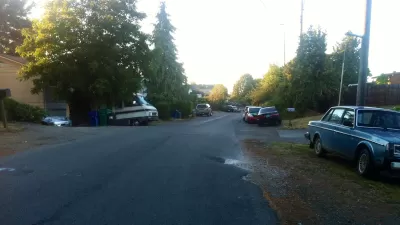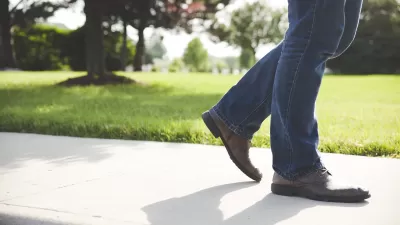Move Seattle included a promise of 250 blocks of new sidewalks and pathways. But costs are much higher than predicted and the low-cost pathways are minimal improvements for pedestrians.

Ryan Packer reports on that status of sidewalks as part of the Levy to Move Seattle, a $930 million levy approved by voters in 2015 to fund transportation investments throughout the city. The sidewalk program included a target goal of 250 blocks of permanent sidewalks and low-cost pathways.
Due to rising cost estimates, Packer says the number of sidewalks and pathways has changed and now only 120 blocks will be permanent sidewalks, down from 150 blocks:
Increased costs are the reason that SDOT [Seattle Department of Transportation] needed to reconfigure the ratio of low-cost sidewalks to traditional ones, but the program cost numbers overall are pretty concerning for pedestrian advocates. Despite the original estimate of $350,000 per block used in the Pedestrian Master Plan, the current plan for the 250 blocks is to spend $380,000, on average, per block, despite a majority of the blocks constructed in the plan being low-cost sidewalks, which had an original estimate of $100,000 per block.
Packer says the shift to low-cost pathways is problematic since the vast majority of pedestrian injuries and deaths occur on main arterials, which need permanent sidewalks.
In his article, Packer also takes a closer look at the quality of sidewalks and pathways constructed during 2016 and 2017, many of which are on blocks that had existing sidewalks. He finds that generally the low-cost pathways are not separated from the street and do not offer protection for pedestrians.
FULL STORY: Is the New Sidewalk Program Living Up to Its Promise?

Alabama: Trump Terminates Settlements for Black Communities Harmed By Raw Sewage
Trump deemed the landmark civil rights agreement “illegal DEI and environmental justice policy.”

Study: Maui’s Plan to Convert Vacation Rentals to Long-Term Housing Could Cause Nearly $1 Billion Economic Loss
The plan would reduce visitor accommodation by 25% resulting in 1,900 jobs lost.

Planetizen Federal Action Tracker
A weekly monitor of how Trump’s orders and actions are impacting planners and planning in America.

Wind Energy on the Rise Despite Federal Policy Reversal
The Trump administration is revoking federal support for renewable energy, but demand for new projects continues unabated.

Passengers Flock to Caltrain After Electrification
The new electric trains are running faster and more reliably, leading to strong ridership growth on the Bay Area rail system.

Texas Churches Rally Behind ‘Yes in God’s Back Yard’ Legislation
Religious leaders want the state to reduce zoning regulations to streamline leasing church-owned land to housing developers.
Urban Design for Planners 1: Software Tools
This six-course series explores essential urban design concepts using open source software and equips planners with the tools they need to participate fully in the urban design process.
Planning for Universal Design
Learn the tools for implementing Universal Design in planning regulations.
Caltrans
Smith Gee Studio
Institute for Housing and Urban Development Studies (IHS)
City of Grandview
Harvard GSD Executive Education
Toledo-Lucas County Plan Commissions
Salt Lake City
NYU Wagner Graduate School of Public Service





























